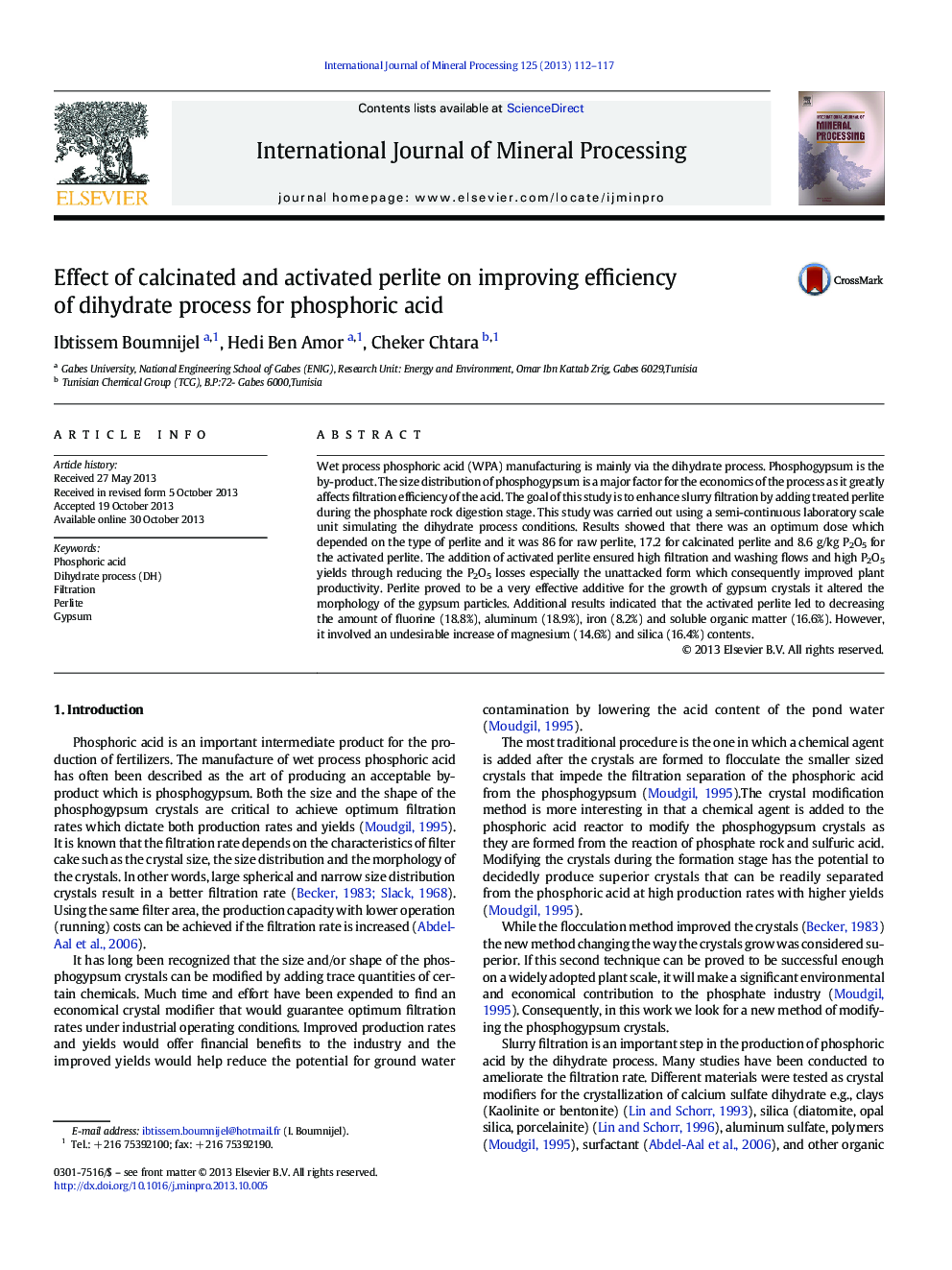| کد مقاله | کد نشریه | سال انتشار | مقاله انگلیسی | نسخه تمام متن |
|---|---|---|---|---|
| 213993 | 1425808 | 2013 | 6 صفحه PDF | دانلود رایگان |

• The improvement of slurry filtration is realized by adding different type of perlite to the Tunisian phosphate rock.
• Best results for slurry filtration are obtained with a dose of activated perlite evaluated as 8.6 g/kg P2O5.
• The addition of activated perlite to Tunisian phosphate rock improves the quality of the produced acid.
• The morphology of phosphogypsum has been improved due to the effect of perlite on crystals growth.
Wet process phosphoric acid (WPA) manufacturing is mainly via the dihydrate process. Phosphogypsum is the by-product. The size distribution of phosphogypsum is a major factor for the economics of the process as it greatly affects filtration efficiency of the acid. The goal of this study is to enhance slurry filtration by adding treated perlite during the phosphate rock digestion stage. This study was carried out using a semi-continuous laboratory scale unit simulating the dihydrate process conditions. Results showed that there was an optimum dose which depended on the type of perlite and it was 86 for raw perlite, 17.2 for calcinated perlite and 8.6 g/kg P2O5 for the activated perlite. The addition of activated perlite ensured high filtration and washing flows and high P2O5 yields through reducing the P2O5 losses especially the unattacked form which consequently improved plant productivity. Perlite proved to be a very effective additive for the growth of gypsum crystals it altered the morphology of the gypsum particles. Additional results indicated that the activated perlite led to decreasing the amount of fluorine (18.8%), aluminum (18.9%), iron (8.2%) and soluble organic matter (16.6%). However, it involved an undesirable increase of magnesium (14.6%) and silica (16.4%) contents.
Figure optionsDownload as PowerPoint slide
Journal: International Journal of Mineral Processing - Volume 125, 10 December 2013, Pages 112–117